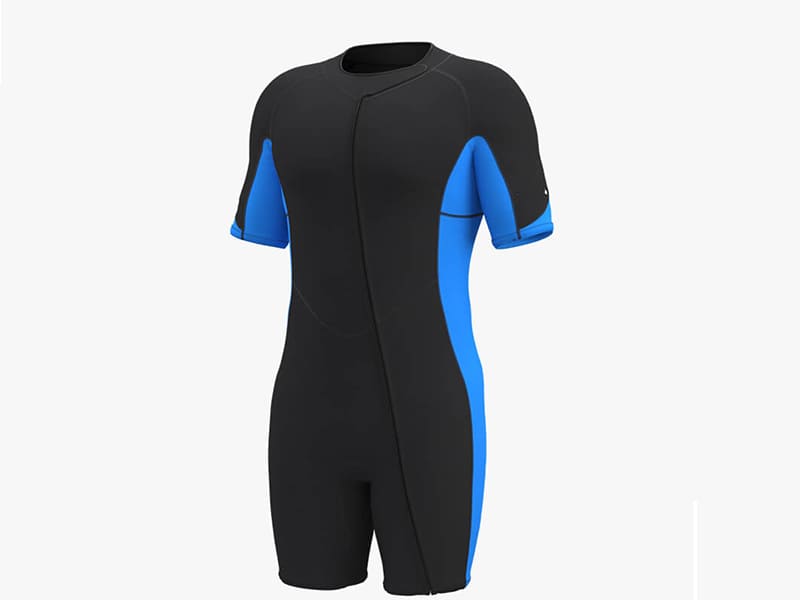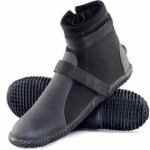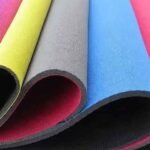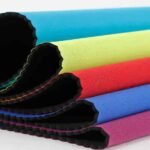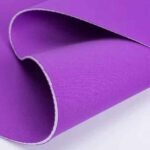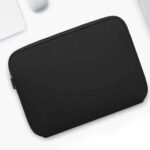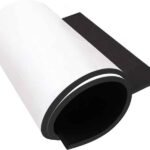When it comes to water sports and diving, staying warm and flexible is essential. Wetsuits are designed to protect and insulate the body, allowing individuals to enjoy their activities even in cold waters. But why is neoprene the material of choice for wetsuits?
Neoprene is used for wetsuits because of its superior insulation, flexibility, and buoyancy. It helps retain body heat while offering comfort and durability in aquatic environments.
Let’s explore the reasons neoprene is the preferred material for wetsuits and its advantages over other materials.
Why are wetsuits made of neoprene?
Wetsuits are specifically designed to keep the wearer warm, comfortable, and mobile in cold water. Neoprene, a synthetic rubber, possesses unique properties that make it ideal for this purpose.
Wetsuits are made of neoprene because it is lightweight, flexible, and retains body heat by trapping a layer of water between the suit and the skin. This trapped water is warmed by body heat, creating an insulating barrier against the cold.
Benefits of Neoprene for Wetsuits
- Thermal Insulation: Neoprene’s closed-cell structure contains air bubbles that reduce heat loss.
- Flexibility: It stretches easily, allowing freedom of movement during water activities.
- Water Resistance: Neoprene repels water, minimizing absorption and maintaining buoyancy.
- Durability: It withstands wear and tear from saltwater, UV rays, and frequent use.
These features make neoprene the top choice for wetsuit manufacturing, ensuring comfort and safety for users in challenging aquatic conditions.
Does water soak through neoprene?
One of the common questions about wetsuits is whether water can penetrate the neoprene material. The answer depends on the type of neoprene and the wetsuit’s construction.
Water does not soak through neoprene itself, as its closed-cell structure is water-resistant. However, a small amount of water may enter through seams or zippers in the wetsuit. This water is quickly warmed by the wearer’s body, enhancing insulation.
Why Neoprene Prevents Water Absorption
- Closed-Cell Structure: Neoprene contains air pockets that block water from seeping through the material.
- Sealed Seams: High-quality wetsuits use techniques like glued and blind-stitched seams to minimize water entry.
- Hydrophobic Properties: Neoprene repels water, keeping the suit lightweight and functional.
By minimizing water absorption, neoprene helps maintain warmth and buoyancy, which are critical for prolonged water activities.
What Are the Key Advantages of Neoprene Over Other Materials for Wetsuits?
While other materials like Lycra, PVC, and rubber are used in some water gear, neoprene stands out as the gold standard for wetsuits. Its unique properties make it superior in multiple ways.
The key advantages of neoprene over other materials for wetsuits include its insulation, flexibility, and durability. It combines comfort with functionality, meeting the needs of both casual swimmers and professional divers.
Comparison of Neoprene and Other Materials
| Property | Neoprene | Lycra | PVC |
|---|---|---|---|
| Insulation | Excellent | Poor | Moderate |
| Flexibility | High | Very High | Low |
| Durability | Exceptional | Moderate | High |
| Water Resistance | Excellent | Low | High |
Neoprene’s balance of insulation, flexibility, and resistance to environmental stressors makes it the preferred choice for wetsuit manufacturing.
Are There Different Types of Neoprene Used for Wetsuits?
Not all neoprene is created equal. Wetsuits use different types of neoprene tailored to specific needs, such as flexibility, environmental impact, and performance.
Yes, there are different types of neoprene used for wetsuits, including standard neoprene, Yamamoto neoprene, and limestone-based neoprene. These variations offer distinct advantages in terms of quality, comfort, and sustainability.
Common Types of Neoprene
-
Standard Neoprene:
- Made from petroleum-based products.
- Affordable and widely available.
- Suitable for general use.
-
Yamamoto Neoprene:
- Derived from limestone rather than petroleum.
- Offers higher flexibility and durability.
- Preferred by high-performance athletes.
-
Limestone-Based Neoprene:
- Eco-friendlier alternative to petroleum-based neoprene.
- Provides excellent insulation and buoyancy.
- Increasingly popular for sustainable wetsuit production.
Choosing the Right Type
The choice of neoprene depends on the activity, budget, and environmental considerations. For instance, high-performance divers may prefer Yamamoto neoprene for its superior stretch, while eco-conscious brands might opt for limestone neoprene.
Conclusion
Neoprene’s unique combination of insulation, flexibility, and durability makes it the ideal material for wetsuits. It provides warmth, comfort, and protection in cold water, ensuring users can focus on their activities without discomfort. The material’s water-resistant and buoyant properties further enhance its suitability for wetsuits.
At Szoneier, we specialize in manufacturing high-quality neoprene wetsuits tailored to the needs of brands, wholesalers, and retailers. With years of experience and advanced production capabilities, we offer customizable solutions to meet your specific requirements.

